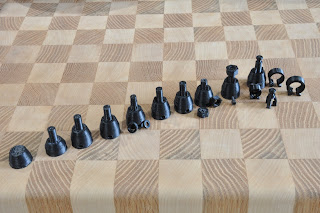



The following photos show progress on the Open Telecine hardware: to include: lighting mount, enlarged aperture, enlarged retaining spring, and partial body (just enough to hold light to aperture).
The light mount is specifically designed to hold a Luxeon Rebel LED (http://www.sparkfun.com/products/10179) 56 mm away from the film. The hollowed cone and wire guide was designed to reduce light pollution. A 2 mm hole was place along the axial shaft of the LED, to eliminate the reflections off the solder joints and produce a point source of light.
As shown in the photo, a temporary test optics was place between the aperture and camera CCD. This allows the team to determine what lighting, aperture and optical adjustments should be made. Some possible problems include: light blooming through the film sprocket holes, lighting cone too small to cover entire 8mm film, poor ability to focus, and diverging light (instead of converging light). It is known that a point source of light placed at the focal point will be converted into a collimated beam by the lens. Additionally, a positive or converging lens in air will focus a collimated beam travelling along the lens axis to a spot (known as the focal point) at a specific distance from the lens. This is what we need to convert the 8mm rectangle of diverging light into am adjustable rectangle (1-3mm) of converging light.
Any idea on how to improved the quality of the captured photo?
This post was created by using only open source hardware and software: CyanogenMod 7 (similar to stock Android or Windows Phone), Ubuntu (similar to Microsoft Windows and MacOS), gimp (similar to Adobe Photoshop), ReplicatorG, LibreCAD and OpenSCAD (simular to AutoCAD), and MakerBot.













